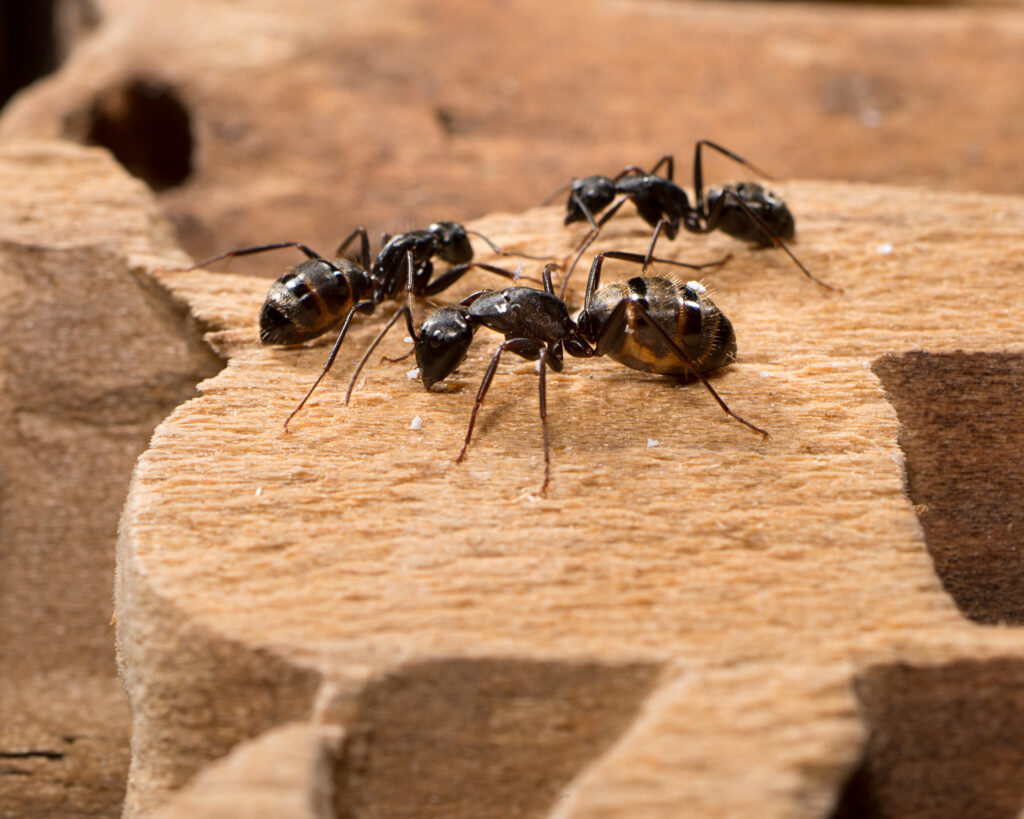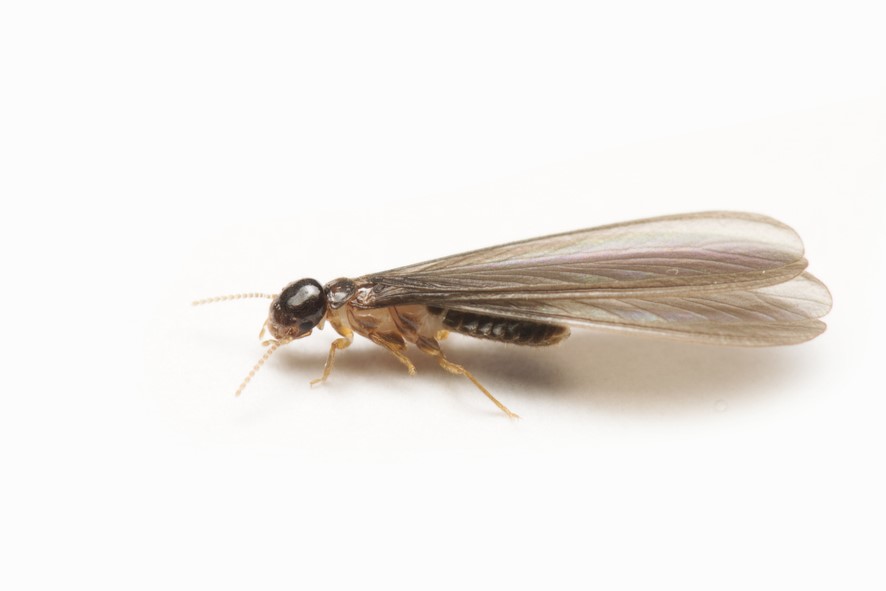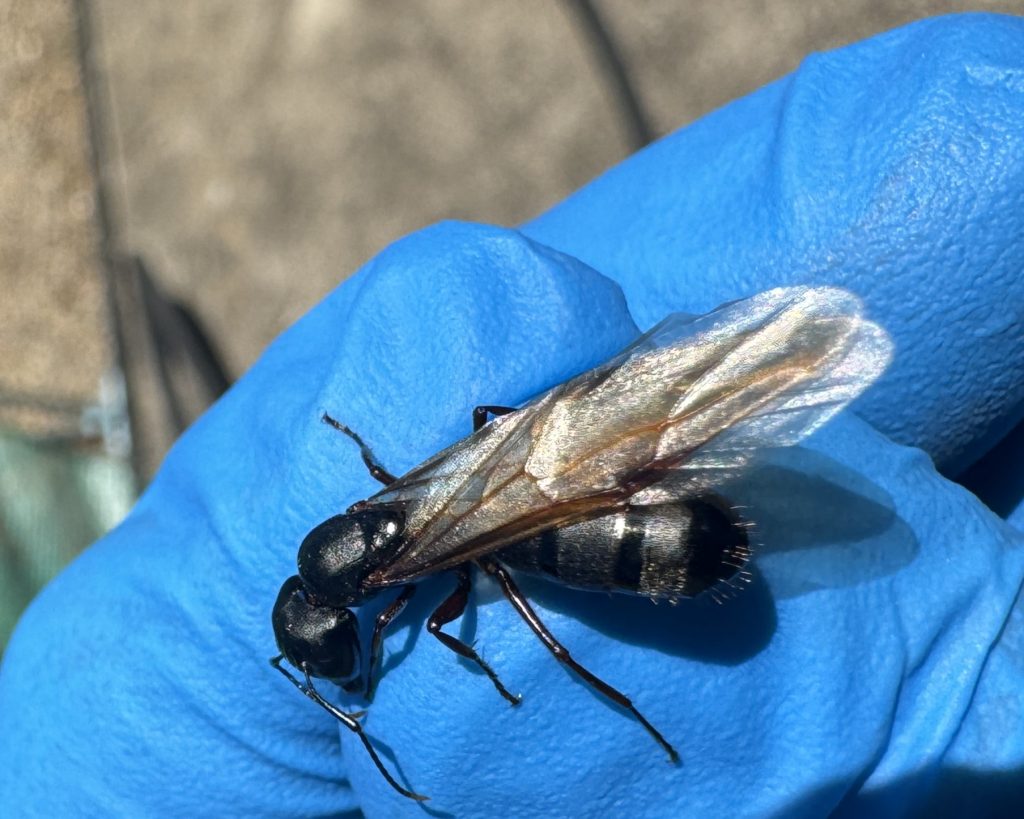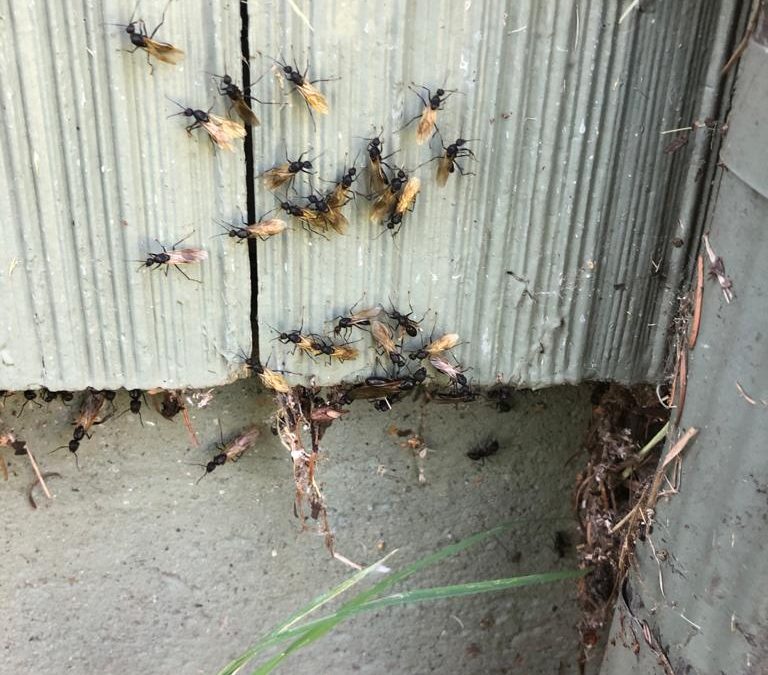Picture this: You’re unwinding at home when suddenly, a squadron of large, winged insects catches your eye, darting out from the wood trim around your window. Panic sets in as ‘termites’ flash through your mind. But wait—upon a closer look, these invaders resemble oversized ants rather than the feared wood-destroying termites.
You’ve heard about giant ants like these being carpenter ants, but that brings up a burning question: Do carpenter ants actually have wings, or is there another explanation? Let’s delve into the mysterious world of these intriguing insects and clear up some common misconceptions.
In this article, we are going to learn:
- Whether or not carpenter ants have wings and why some do.
- The role of winged carpenter ants, known as alates or swarmers, in the colony.
- When and why carpenter ants swarm, and what happens after they swarm.
- The differences between winged carpenter ants and termites, helping you correctly identify them.
- What it means if you see winged carpenter ants indoors and the implications for your home.
- Key preventative measures to protect your home from a carpenter ant infestation.
Do Carpenter Ants Have Wings?
Yes, carpenter ants can have wings! Well, not all of them do. The winged carpenter ants are part of the reproductive caste and are known as alates or swarmers. Here’s what you need to know:
Winged Carpenter Ants (Alates/Swarmers)
- Role: Winged carpenter ants are the reproductive members of the colony, including both males and females. Their primary purpose is to leave the nest, mate, and start new colonies.
- Appearance: Alates are typically larger than worker ants and have two pairs of wings, with the front wings longer than the hind wings. These wings are usually translucent with visible veins.
- Swarming Behavior: Winged carpenter ants usually swarm during the warmer months, particularly in spring or early summer. Swarming occurs when the colony has matured and is ready to expand.
- After Swarming: Once the male and female alates mate, the male dies, and the female sheds her wings to establish a new colony. She becomes a normal looking carpenter ant without wings, never to fly again.

Non-Winged Worker Carpenter Ants
Although the sight of winged carpenter ants can be alarming, it’s important to note that most carpenter ants you’ll encounter do not have wings. You are much more likely to see carpenter ants without wings if you encounter them.
- Minors: The majority of the colony consists of worker ants, which do not have wings. They are responsible for foraging, caring for the queen and larvae, and expanding the nest.
- Majors: Some carpenter ant colonies also have larger, non-winged ants known as majors/soldiers, whose role is to protect the colony.
Difference between carpenter ants and termites.
Distinguishing carpenter ants from termites is crucial due to their vastly different impacts on your home. While termites consume wood, causing potentially catastrophic structural damage, carpenter ants create nests within wood without eating it, which can still weaken structures over time.
Correctly identifying these pests ensures that you implement the most effective treatment strategies, preventing unnecessary damage and costs. When swarming, they can be rather similiar in appearance but there are a few key differences to watch out for:
- Body Shape: Carpenter ants have a narrow, constricted waist, while termites have a more uniform, straight waist.
- Wings: Carpenter ants have front wings that are longer than their back wings, whereas termite wings are of equal length.
- Antennae: Carpenter ants have elbowed (bent) antennae, while termite antennae are straight and bead-like.

Termite Swarmer with Wings
What to Do if You See Winged Carpenter Ants
If you spot winged carpenter ants indoors, it could indicate a mature infestation within your home. Here’s what you should do:
- Inspect: Look for signs of nests, such as wood shavings (frass), hollow-sounding wood, or ant trails.
- Call a Professional: Consider contacting a pest control professional to assess the situation and recommend appropriate treatment.
- Preventative Measures: Keep vegetation trimmed away from your home and ensure no tree branches touch the structure. Replace any water-damaged or rotting wood, and reduce moisture levels in and around your home with dehumidifiers or sump pumps.
Spotting winged carpenter ants indoors during the early months of the year, from January to April, is a definitive sign of an active nest within your home. For a deeper dive into why early sightings are particularly concerning, be sure to read our detailed article on encountering Carpenter Ants early in the spring, CLICK HERE!
If you spot a few winged carpenter ants inside your home, it might just be a fluke—they could have flown in from outside during the swarming season when alates are abundant in the area. However, seeing a larger number of these ants indoors, especially in a specific area, is a stronger indication of a nest within your home.
Carpenter ant nests typically don’t produce winged alates until they have matured, which can take 3-4 years. This means that if you are seeing a significant number of winged ants inside, the colony has likely been established for some time, and it’s essential to take action to address the infestation.

A Good Earth technician carefully holds a carpenter ant queen swarmer, showcasing its size and distinct features.
Wrapping it up: Knowledge is power!
Now that you’re clued into the secret lives of carpenter ants, especially those mysterious winged ones, you’re well-prepared to keep them from turning your lovely home into their own woodsy retreat. Spotting these winged pioneers indoors can be startling, but it’s also a heads-up that your home might be hosting an ant block party you never intended to throw.
Don’t let the thought of these industrious little critters munching through your home’s framework stress you out. Keep an eye out, especially during the cozy indoor months, and remember, catching them early is the best way to avoid unwanted repairs.
Feeling overwhelmed? No worries! At Good Earth Pest Company, we’re just a call away, ready to step in and send those carpenter ants packing. We’re here to make sure your home stays the peaceful sanctuary it should be.
Give us a shout, and let’s put those pesky carpenter worries to rest. Because really, your home should be about relaxation, not renovation by ants!
~ Adam Hiddelson



